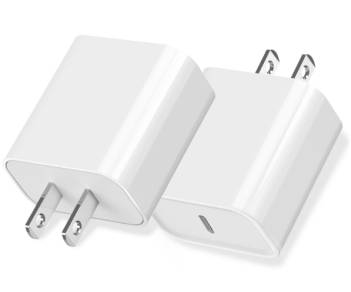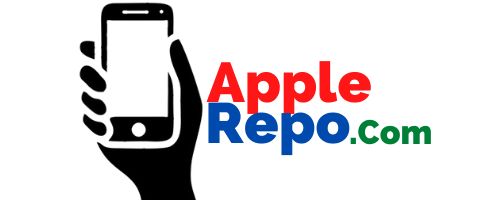Power Up Properly: Complete Charging Block for iPhone Guide and Safety Analysis
Power management has become a critical consideration in smartphone ownership, with charging specifications directly affecting battery longevity, charging speed, and overall device reliability. Charging block for iPhone selection has grown increasingly complex as Apple transitioned from proprietary Lightning to universal USB-C connectivity, introducing users to diverse power adapter options ranging from budget alternatives to premium solutions supporting multiple devices simultaneously.

The controversial decision to eliminate charging blocks from iPhone packaging beginning in 2020 shifted responsibility to consumers for selecting appropriate power adapters, creating confusion about compatibility, safety, and optimal charging speeds. Understanding wattage specifications, connector types, and safety certifications empowers iPhone owners to make informed purchasing decisions that protect their investment while ensuring efficient charging.
This comprehensive exploration examines iPhone charging block specifications across generations, analyzes power delivery requirements for fast charging, evaluates third-party alternatives to Apple’s official adapters, addresses common misconceptions about high-wattage chargers, and provides expert guidance helping users select optimal charging solutions for their specific iPhone models and usage patterns.
What Charging Block Should I Use for My iPhone?
Apple recommends using at least a 20W USB-C power adapter for fast charging on iPhone 12 and newer models, with higher wattages up to 30W or 35W providing marginally faster charging without harming battery health. The minimum 20W specification represents the threshold where iPhones begin accepting fast charging, with higher wattages primarily benefiting users charging multiple devices simultaneously.
For iPhone 15 Pro and iPhone 16 models, Apple’s official guidance suggests 30W or higher USB-C adapters for optimal charging speeds approaching 27W practical output. The new iPhone 17 series similarly recommends 20W minimum with 30W to 35W preferred for maximum charging efficiency.
Lightning cable users (iPhone 7 through iPhone 14) require USB-C to Lightning cables paired with USB-C power adapters for fast charging. The combination of USB-C charging cable and appropriate power adapter enables fast charging capabilities not achievable with the original USB-A to Lightning connections included with older iPhones.
Wireless MagSafe charging on iPhone 14 and newer supports up to 15W with qualified chargers paired to 30W power adapters, or 25W on iPhone 17 models with compatible 30W+ MagSafe chargers. MagSafe wireless charging proves slower than wired USB-C but offers convenience and reduced port wear.
Why Did Apple Get Rid of the Charging Block?
Environmental sustainability represents Apple’s primary justification for eliminating charging blocks from iPhone packaging beginning with iPhone 12 in 2020. The company estimates this decision reduces packaging waste by approximately 70% and carbon emissions from manufacturing and transportation.
Market penetration of compatible chargers provided secondary justification, with Apple noting that most users already possessed USB-C adapters from other devices including iPads, MacBooks, or Android phones. This reasoning proved somewhat optimistic, as many customers lacked appropriate high-power USB-C adapters necessary for fast charging.
Cost reduction indirectly benefits Apple through lower packaging requirements and manufacturing complexity, though the company framed the decision purely as environmental responsibility. The decision ultimately shifted costs to consumers purchasing separate charging blocks.
Regulatory pressure particularly from the European Union’s directive mandating standardized USB-C connectors accelerated Apple’s transition away from proprietary Lightning connections and included accessories.
Market competition from manufacturers selling phones without chargers normalized the practice, though many competitors (Samsung, OnePlus) later reinstated chargers following consumer backlash.
Is It Okay to Use a 65W Charger for an iPhone?
Yes, using a 65W charger for iPhone is completely safe and will not damage the device or battery. iPhones employ sophisticated power management systems that regulate inbound power regardless of adapter wattage, accepting only the power required for optimal charging.
The iPhone’s internal charging controller automatically negotiates Power Delivery specifications with the charger, requesting precisely the power necessary for safe charging. A 65W charger provides excess capacity that remains unused, similar to how 30W chargers prove overpowered for iPhone’s actual maximum 27W consumption.
Practical benefits of 65W+ chargers include simultaneous charging capability for multiple devices including laptops, tablets, and phones. Power distribution systems in high-wattage adapters intelligently allocate available power, prioritizing high-power devices while maintaining sufficient energy for phone charging.
The only consideration involves charger heat generation, as excessive wattage in a single port may cause thermal stress. However, quality 65W+ chargers designed for multi-device use distribute power efficiently, maintaining reasonable temperatures even at maximum output.
Is a 100W Charger OK for an iPhone?
Absolutely, 100W chargers are safe for iPhone charging and represent the most versatile solution for households or offices with multiple devices requiring power. The charger provides massive headroom for simultaneous charging of phones, tablets, and laptops without compromising any device.
100W capacity enables genuine multi-device workflows where professionals charge MacBook Pro laptops, iPad Air tablets, and multiple iPhones simultaneously. This capability proves particularly valuable in travel scenarios where single charger accommodation becomes essential.
Power allocation intelligence in quality 100W chargers automatically distributes available wattage among connected devices, prioritizing high-power consumers like laptops while maintaining optimal charging rates for phones. This sophisticated power management ensures every device charges as quickly as its specifications allow.
Safety standards for 100W+ chargers remain identical to lower-wattage alternatives, with all quality adapters meeting IEC/UL 60950-1 safety standards. Temperature monitoring, overvoltage protection, and current limiting safeguard against device damage or overheating.
iPhone Original Charger Price: Official Apple Options
Apple’s 20W USB-C Power Adapter retails for approximately $19 USD, representing Apple’s entry-level fast charging solution for iPhones. This compact adapter provides the minimum specification recommended for fast charging on most iPhone models.
Apple’s 30W USB-C Power Adapter costs approximately $29 USD, offering marginally faster charging for newer iPhones while maintaining the same compact form factor as the 20W variant. This option provides ideal balance between performance and portability for most users.
Apple’s 35W Dual USB-C Power Adapter priced at approximately $49 USD features two USB-C ports enabling simultaneous charging of two devices at optimized power distribution. The dual-port design appeals to users regularly charging multiple Apple devices.
Apple’s newer 40W Dynamic Power Adapter (2025 release) supports up to 60W maximum output through single USB-C port, pricing around $39 USD. This latest innovation provides Apple’s fastest iPhone charging capability while maintaining broad device compatibility.
Regional pricing variations exist particularly in Indonesia where Apple products carry import duties and local distributor markups. Prices through authorized Indonesian retailers like iBox typically run 20-30% higher than US pricing.
iPhone Charger Original: Authentication Considerations
Counterfeit Apple chargers flood third-party markets particularly in Indonesia, with convincing fake products indistinguishable from genuine chargers through visual inspection alone. Purchasing exclusively through official Apple Stores, authorized retailers, or major e-commerce platforms significantly reduces counterfeit risks.
Genuine Apple chargers include holographic security labels, precise printing quality, correct packaging, and proper weight that fake alternatives often overlook. Suspiciously low pricing or unfamiliar retailers should raise authenticity concerns.
Certification verification through Apple’s website or authorized retailer confirmation ensures genuineness and warranty coverage protecting against defects or safety concerns.
Harga Charger iPhone Original iBox: Indonesia Market Pricing
iBox Indonesia pricing for Apple chargers typically runs IDR 250,000-350,000 (approximately $15-22 USD) for 20W adapters, IDR 350,000-450,000 for 30W options, and IDR 600,000+ for dual-port configurations. These prices reflect local import duties and distributor margins.
Limited-time promotional pricing occasionally offers discounts during holiday seasons or special sales events, though base prices remain relatively consistent through official channels.
Warranty coverage through iBox purchases includes Apple’s standard one-year manufacturer warranty against manufacturing defects.
iPhone Charger USB: Technical Specifications
Modern iPhone chargers use USB-C connectors on the power adapter, with iPhone 15 and newer featuring USB-C to USB-C cables for complete end-to-end USB-C charging. Older Lightning-equipped iPhones require USB-C to Lightning cables bridging the connection gap.
Power Delivery (PD) certification ensures chargers negotiate proper voltage and current delivery, automatically adapting to device requirements. All iPhones support PD standards, with newer models accepting higher wattage offerings.
Technical specifications include 5VDC or 9VDC output voltage, current ratings of 2.2A or higher, and frequency specifications of 50-60Hz single phase for global compatibility with standard electrical infrastructure.
iPhone Charger Netherlands: Regional Considerations
European iPhone chargers must comply with the EU’s mandatory USB-C standardization directive, ensuring iPhone 15 and newer models use consistent connectors across all brands. This regulatory alignment simplifies purchasing regardless of location within Europe.
Electrical specifications in Netherlands (230VAC, 50Hz) match Apple’s charger specifications perfectly, requiring no additional voltage converters for standard usage. International travelers bringing chargers from other regions typically encounter no compatibility issues.
Apple iPhone Charger Cable Original: Lightning and USB-C Options
Apple’s USB-C to Lightning Cable (iPhone 7-14) costs approximately $19 USD, providing the fast-charging connector combination necessary for optimal charging speed. These cables feature proprietary Lightning connectors exclusive to Apple devices.
Apple’s newer USB-C to USB-C Cable (iPhone 15+) retails at approximately $19 USD, enabling maximum charging performance with modern USB-C power adapters. This universal standard finally enables cross-brand charger compatibility.
Cable durability proves critical given frequent connection/disconnection stress. Official Apple cables include proper strain relief and reliable connectors, though quality third-party alternatives from manufacturers like Anker or Native Union provide excellent value at lower cost.
Charger iPhone Lightning: Legacy Systems
Lightning charging remains the standard for iPhone 7 through iPhone 14 models, with millions of devices still relying on USB-C to Lightning cables for charging and data transfer. Apple continues producing Lightning cables for backward compatibility with older devices.
Lightning cable vulnerabilities include susceptibility to damage at connector junction points from repeated bending and stress. Quality reinforced cables last significantly longer than basic alternatives.
iPhone Charger Name: Technical Terminology
“Charging block” or “power adapter” refers to the wall-mounted component connecting to electrical outlets providing power conversion from AC to DC.
“Charging cable” refers to the removable cord connecting charger to iPhone (USB-C to Lightning or USB-C to USB-C).
“USB-C to Lightning cable” specifically describes the connector combination for older iPhones.
“Fast charger” or “quick charger” describes adapters meeting 18W+ minimum specifications supporting USB Power Delivery.
“Wattage rating” indicates power output capacity (20W, 30W, 65W, etc.) determining simultaneous multi-device charging capability.
Optimizing iPhone Charging Block Selection
Charging block for iPhone selection involves balancing performance requirements, budget constraints, multi-device needs, and portability considerations. Apple’s official 20W to 35W adapters provide guaranteed compatibility and reliability, while quality third-party alternatives from established brands like Anker, Belkin, and UGREEN offer superior value without compromising safety.
Understanding that higher wattages benefit iPhones only marginally while enabling simultaneous multi-device charging empowers economical purchasing decisions. The misconception that excessive wattage damages iPhones persists despite sophisticated power management systems that prevent overcharging regardless of adapter capacity.
Success in iPhone charging block selection requires matching adapter specifications to your specific iPhone model, usage patterns, and accessories. Whether investing in Apple’s official solutions for ecosystem consistency or exploring cost-effective third-party alternatives meeting the same safety and performance standards, excellent charging options exist across all budgets and requirements.

Editor-in-chief in charge of reviewing an article before it is published on applerepo.com
